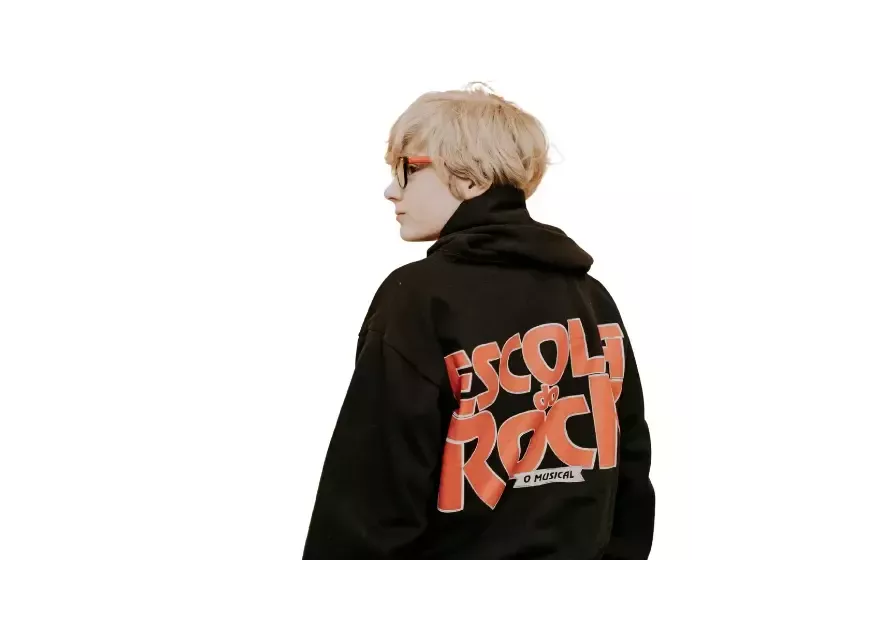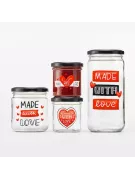What is the best fabric for hoodies? - Here are the Answer

Not all fabrics are suitable for the manufacture of sweatshirts. When designing a sweatshirt, the choice of fabric is crucial to ensure the comfort, durability and style of the garment. It is essential to choose a material that offers the right properties, such as resistance, softness and thermal insulation. Below, we explain which are the recommended fabrics and the best options for making hoodies.
¿How to choose the best type of fabric for me for hoodies?
Choosing the right fabric depends on several factors, such as style, functionality and the climate for which the garment is intended. Here is a guide to help you select the best fabric for your sweatshirts.
- Consider the purpose of the sweatshirt The first step in choosing the right fabric is to consider the intended use of the sweatshirt. If you're creating sweatshirts for cold climates, you'll need a material that offers insulation and retains heat. For milder climates or everyday sweatshirts, you'll want a lighter, more breathable material.
- Choose between cotton and synthetic fabrics. The next step is to decide whether you prefer a natural fabric such as cotton or a blend with synthetic fibers, such as polyester. · Cotton is soft, breathable and comfortable, making it a popular choice for high-quality sweatshirts. It is also hypoallergenic, making it suitable for people with sensitive skin. · Cotton/polyester blends, if you are looking for additional durability, a cotton/polyester blend may be a good choice. Blends tend to be more wrinkle resistant and shrink less than pure cotton, but may be less breathable.
- Evaluate the weight of the fabric (GSM). The fabric weight, measured in GSM (grams per square meter), is a key factor when choosing fabric for your sweatshirts. GSM determines the thickness and robustness of the fabric. 450 GSM: This is the ideal weight for a high quality sweatshirt. This weight offers a rugged feel without being overly heavy, making it perfect for cold or temperate climates. It also provides a luxurious look and feel. 400-500 GSM: This range is excellent if you want to adjust the weight according to the purpose of the garment. Fabrics below 400 GSM are usually too light for sweatshirts, while those above 500 GSM can be heavy and uncomfortable.
- Consider the fabric finish The finish of the fabric is also important. Depending on the feel you want to achieve with your sweatshirts, you should consider different types of finishes.
- Test the fabric before manufacturing in large quantities. Before committing to manufacturing your sweatshirts in large quantities, it is advisable to order fabric samples and test them. See how the fabric feels, how it reacts to washing and how well it holds its shape and color. This will help you make sure that the fabric you choose meets your expectations in terms of quality and durability.
Fabric types, advantages, disadvantages and common usage
Fabric characteristics, such as softness, durability, weight and breathability, can directly affect the comfort and functionality of the garment. Each type of fabric has its own advantages and disadvantages, so it is important to understand how each performs and in which contexts it is most suitable. The following explains the most common fabric types for sweatshirts, their advantages, disadvantages and the most common uses for each.
100% Cotton
Cotton is one of the most popular materials for the manufacture of sweatshirts due to its softness, breathability and comfort.
Common use: High quality sweatshirts for everyday wear and moderate climates. Ideal for those looking for comfort and a natural finish to their garments. Fleece Back Cotton Fleece back cotton is a variant characterized by a smooth exterior and a soft, quilted interior, which provides greater heat retention.
Advantages:
- Soft and comfortable for everyday wear.
- Breathable, making it ideal for temperate climates and to avoid overheating.
- Hypoallergenic, making it suitable for people with sensitive skin.
Disadvantages:
- Tends to shrink if not washed properly.
- Less resistant to wear and wrinkling compared to synthetic fabrics.
- Does not retain heat well in extremely cold climates.
Fleece Back Cotton
Fleece back cotton is a variant characterized by a smooth exterior and a soft, quilted interior, which provides greater heat retention.
Common use: Ideal for sweatshirts designed for cold weather or outdoor activities. It is very common in sportswear and casual sweatshirts in winter.
Advantages:
- Excellent for keeping warm in cold weather.
- Soft interior increases the feeling of comfort.
- Offers a robust and cozy look.
Disadvantages:
- May be too warm for temperate or hot climates.
- Not as lightweight or breathable as other options, such as French Terry.
French Terry Cotton
French Terry is a type of cotton that has a smooth surface on the outside and small loops on the inside. It is known for its balance between softness and breathability.
Common use: Used in luxury sweatshirts and high-quality casual garments. It is ideal for sweatshirts that you want to wear all year round, thanks to its lightness and versatilit
Advantages:
- Breathable and comfortable, ideal for milder climates.
- Retains a good amount of warmth without being too heavy.
- Soft both inside and out, making it an attractive option for everyday use.
Disadvantages:
- Not as warm as plush-backed cotton.
- Less robust for extremely cold climates.
Cotton/polyester blend
This blend is very common in the textile industry, as polyester adds durability and resistance to shrinkage, while cotton maintains softness and comfort.
Common use: Used in sweatshirts for physical activities or casual wear that require greater durability and resistance. It is an excellent choice for everyday sweatshirts that need to be washed frequently.
Advantages:
- Improved durability compared to 100% cotton.
- Less likelihood of shrinkage after washing.
- Wrinkle resistance and easy maintenance.
Disadvantages:
- Less breathable than pure cotton.
- May generate more heat, which is not ideal for hot climates.
- May be less soft than 100% cotton, depending on the percentage of polyester.
100% polyester
Polyester is a synthetic fiber used primarily in sportswear due to its durability and water resistance.
Common use: Common in sportswear and sweatshirts for outdoor activities, where durability and water resistance are important factors.
Advantages:
- Very durable and wear resistant.
- Does not shrink or deform easily.
- It retains heat well and is water resistant, making it ideal for humid climates.
Disadvantages:
- Not breathable, which may cause discomfort in hot climates or during prolonged activities.
- Can generate a stiff feel compared to cotton.
- Does not offer the same softness and comfort as natural fabrics.
Stretch jersey
The stretch jersey is a blend of cotton or synthetics with a percentage of elastane, which gives it elasticity and a tighter fit.
Common use: Tight-fitting sportswear, lightweight sweatshirts and everyday wear requiring flexibility.
Advantages:
- High elasticity that provides greater comfort and freedom of movement.
- Soft and comfortable against the skin.
- Lightweight and breathable, ideal for tight-fitting garments.
Disadvantages:
- Not suitable for thick or winter sweatshirts, as it does not offer great heat retention.
- Elasticity may diminish over time if not properly cared for.
Fleece
The fleece is a synthetic polyester fabric that mimics the texture of wool. It is widely used in winter garments because of its ability to maintain warmth.
Common use: Winter sweatshirts and jackets, outdoor clothing and outdoor activities.
Advantages:
- Excellent thermal insulation, ideal for cold climates.
- Lightweight and comfortable despite its thickness.
- Quick drying and easy to wash.
Disadvantages:
- Not breathable, which can generate excessive sweating.
- May generate pilling over time.
- Not as elegant or versatile as other natural fabrics.
Wool
wool is a natural fiber obtained from animals such as sheep. It is known for its ability to hold warmth and its softness.
Common use: High quality sweatshirts and outerwear. It is ideal for cold climates and luxury winter clothing.
Advantages:
- Excellent heat retention, ideal for cold climates.
- Breathable and water resistant in its natural state.
- Naturally elastic and wear resistant.
Disadvantages:
- May be rough on direct skin contact.
- Requires special care, as it may shrink or be damaged by improper washing.
- Tends to be more expensive than other materials.
French Terry
The French terry, or French Terry, is a cotton fabric with a smooth surface on the outside and loops on the inside, providing softness and breathability.
Common use: Lightweight sweatshirts for everyday wear and sportswear. Perfect for those looking for comfort and style without excessive weight
Advantages:
- Soft, lightweight and breathable, ideal for everyday use.
- Absorbs moisture well without being too heavy.
- Provides a good balance between comfort and warmth.
Disadvantages:
- Does not offer as much thermal insulation as fleece or wool, so not ideal for extremely cold climates
¿What to specify when talking to your fabric manufacturer?
When working with a fabric manufacturer to produce high-quality sweatshirts, it is critical to be clear and specific in your requirements. To ensure that the fabric meets your expectations in terms of durability, comfort and style, you need to detail several key aspects such as material type, weight, finish and other technical details. Here's what to specify when talking to your fabric manufacturer to ensure you get the best possible material.
- Type of material The first step in choosing the right fabric is to consider the intended use of the sweatshirt. If you're creating sweatshirts for cold climates, you'll need a material that offers insulation and retains heat. For milder climates or everyday sweatshirts, you'll want a lighter, more breathable material.
- Fabric weight (GSM) The weight of the fabric, measured in GSM (grams per square meter), determines the thickness and strength of the sweatshirt. For a high-quality sweatshirt, a range of 400 to 500 GSM is recommended.
- Fabric finish The finish affects both the look and feel of the fabric. When communicating with your manufacturer.
- Color and dyeing process Specify the colors you want for the fabric and if you prefer a specific dyeing process. Some colors may require special techniques to ensure they do not fade over time.
Key Specifications:
- Accurate color palette: Be sure to provide color codes (such as Pantone) for accurate results.
- Dyeing process: You can opt for reactive dyeing for more vibrant and long-lasting colors.
- Fabric durability and treatment Some manufacturers offer additional treatments to improve the durability of the fabric or give it special properties, such as water resistance or anti-pilling characteristics (to prevent pilling).
Key Specifications:
- Anti-pilling treatment: Important for sweatshirts that will be worn and washed frequently.
- Shrink resistance: Specify if you want the fabric to be pre-washed to prevent shrinkage after manufacturing.
- Quality certifications If you're looking for a fabric that meets certain sustainability or safety standards, be sure to request specific certifications such as Oeko-Tex or GOTS (Global Organic Textile Standard), which guarantee that the fabric is free of harmful chemicals or has been produced in an environmentally friendly manner.
Key Specifications:
- Certifications: Be sure to request fabric that has certifications if you want to ensure that the material meets certain ecological or safety standards.
- Delivery times and quantity Clearly specify the quantity of fabric you need and the expected lead times. Be sure to communicate whether you need the fabric in large quantities or for smaller productions, which may affect the manufacturing process.
Key Specifications:
- Quantity: Be sure to indicate the exact number of meters of fabric you need for your production.
- Delivery time: Make sure to coordinate the deadlines to avoid delays in the production of your garments.








Leave a comment